



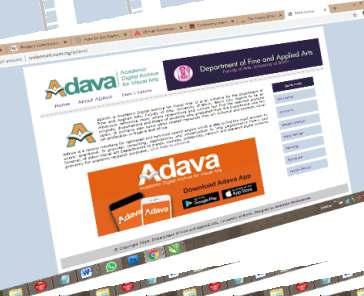



ISBN: 978-978-798-416-1









ISBN: 978-978-798-416-1
Assessed by the School of Post Graduate Studies, the Department of Fine and Applied Arts, Faculty of Arts, in partial fulfilment of the requirements for the award of the degree of Doctor of Philosophy (Ph.D) Visual Art (Graphics) of the University of Benin, Benin City, Nigeria
ByKehinde Hassan
ShobukonlaN.C.E. (Technical) Fine and Applied Arts, Akoka,

B.A. (Education) Fine and Applied Arts, Benin City Web Design & Animation, APTECH, Lagos
M.F.A. Advertising, Benin City
Copyright 2020
© Kehinde H. ShobukonlaISBN: 978-978-798-416-1
Design and Development of Academic Digital Archive and Records for the Department of Fine and Applied Arts, University of Benin, Nigeria
Supervisor
Professor John U. Ogene, fsna, fipmd, JP Head, Department of Fine and Applied Arts, Faculty of Arts, Faculty of Environmental Sciences, University of Benin, Benin City, Nigeria
Dean, Faculty of Arts
Professor Eddy Erhagbe
Dean, School of Postgraduate Studies
Professor Felix E. Okieimen, dscs
Vice Chancellor
Professor Lilian Imuetinyan Salami
Design by Kehinde Shobukonla k.shobukonla@uniben.edu
+234 8025300672
Printed by Ednounce Sk Ventures www.ednounce.com info@ednounce.com
+234 8136622424
All rights reserved
No part of this publication may be reproduced, stored in a retrieval system or transmitted in any form or by any means (electronic, mechanical, photocopying, recording or otherwise) without the permission in writing to the researcher or his supervisor.
Title page
Copyright page Vice-Chancellor
Dean, School of Postgraduate Studies
Dean, Faculty of Arts
Head, Department of Fine & Applied Arts








O R E W O R D

The Ph.D Visual Arts in the Department of Fine and Applied Arts started only recently in 2008/2009 after thirty-two years of existence of the Department. It began on an experimental note, Put has turned out most successfully well after several challenges in weathered storm. From its inception, the Department has been guided by the philosophy of Visual Arts productions and its epistemology. These are essential requirementsfortheawardofthePh.DDegreeinstudioArt.
In line with these objectives, the Uniben Studio Ph.D programme has been strictly designed toward the attainment of rigorous global academic standard. It is a dual process that demands studio exploitation, experimentation, observation and exploration to be documented in a carefully written thesis and a solo exhibition of its practicaloutcome.

In consonance with this established precedence, the candidate is obliged to present the outcome of the doctoral research in a solo exhibition which must be defended before a panel of internal and external examiners in accordance with extant regulations. Kehinde Shobukonla's Design and Development of Academic Digital Archive for Visual Arts and Records for the Department of Fine and Applied Arts, University of Benin fulfills that requirement as an outcome of the thesis. The giant step has been taken by Shobukonla for showcasing the foremost Virtual Graphics Exhibition of the Department. This was done by experimenting on capabilities of emerging technologyasamediumofcontemporaryvisualcommunicationsdesignanddelivery.

T R O D U C T I O N
One of the major challenges faced by universities in most developing countries is the problem of an effective and efficient Records Management System especially in the face of increasing population of Nigeria students and the fact that most of our institutions of learning are still conventionally paper based. Unfortunately, when we consider the importance of effective records keeping as being fundamental to accountability, equity, transparency as well as key in planning and meeting the legislative and regulatory needs of the university including archival, audit and oversight activities, the question that immediately comes to mind is “How effective and efficient is Records management systems in the Nigeria University which prides itself as the focus of teaching, research and development”? To answer this question, Utulu (2001) and Egwunyenga (2009) for example aptly observed that improper security of records, inadequate computer terminals, ineffective means of retrieving records, lack of record keeping policy, inadequate resources as well as lack of record retention and disposition schedule are some of the problems hindering effective records management in Nigeria Universities. Faced with this problems, the result is not farfetched. However low productivity in administrative implementation, loss of vital information and difficulty in record retrieval indeed becomes inevitable. It was until 1960s that effort was first made by U.S. government archivists to preserve electronic records, but this initiative became acceptable to many toward the end of the 20th century, more so as the volume and variety of government-produced digital records expanded (Megan, 2012). According to UN, digital preservation is the active management and maintenance of digital objects (the files, or groups of files, that contain information in digital form) so they can be accessed and used by future users. The process involves planning, resource allocation, and application of preservation methods and technologies, and it combines policies, strategies and actions to ensure access to reformatted and born-digital content, regardless of the challenges of media failure and technological change. The goal of digital preservation is the accurate rendering of authenticated contentovertimetoensureitsauthenticity,accessibilityand usability Itthereforefollows thatfor our institution, the University of Benin to be rated amongst the 10 Leading Universities in Africa, and First in Nigeria, the role of ICT in Records management must be backed with appropriate policies. Today's exhibition titled “design and development of an academic digital archive and records” is only a pointer to the strategic efforts of the Post-graduate Students of University of Benin towards the implementation of a digitalization initiatives for faculties, departments and Units as well as the Nigeria E-GovernmentMasterPlan.Finally,forrecordsmanagementtosupportthedeliveryofdevelopment initiatives and to play a social role within a developing society, human resources must be involved in the process as they have an essential role in designing, implementing, and supporting the records management system and its clients. I therefore will like to appeal to the project supervisor, the Department and University to encourage students with innovative research and Development ideas such as this, so that the University of Benin can assume it's rightful place among the 100 Best UniversitiesintheWorld.

Cited References
Utulu, C.C. (2001). Quality of University Education in Nigeria: Problems and Solution. Journal of the Commonwealth Council forEducationalAdministrationandManagement.29:1.
Egwunyenga E.J (2009): Record Keeping in Universities: Associated Problems and Management Options in South West GeoPoliticalZoneofNigeria.IntJEduSci,1(2):109-113
Megan, P (2012). "Lessons Learned from NARA's Electronic Records Archives Project". Archiving 2012 Final Program and Proceedings:8–12.

Title of thesis:
Y N O P S I S
Name of student: Kehinde Hassan SHOBUKONLA
Session of admission: 2015/2016
Matriculation number: PG/ART1512932
Faculty: Arts
Department: Fine and Applied Arts
Degree in view: Ph.D
Time basis: Full-Time
The design and development of academic digital archive for visual arts and records research were prompted by the final year students' project reports that are undertaken at the Department of Fine and Applied Arts, University of Benin, Nigeria and records of students' academic performances. These documentations are usually submitted in hard copies and shelved at the Department's Library. These documentation and preservation system is traditional, prone to damages, loses, insecurity and some limitations in terms of access for reference purposes. Upgrading this approach has made it obligatory to consider digital alternatives that will provide safety and security, position the research works on a global platform and also provide an unlimited access to them through various digital devices online and offline. Functions of such digital archive and records are evident as they augment printed information resources, sourcing, accessibility, security, safety and preservation. Therefore, this study investigated the design and development of a dynamic electronic research repository peculiar to visual art research and academic records undertaken in the Department of Fine and Applied Arts, University of Benin, Benn City, Nigeria which is otherwise referred to as ADAVA and DASAR respectively
Among other emerging digital processes, it involved primarily collecting, sorting and converting the existing hard copies of research works at the Department's Library into digital versions while employing problem-solving research design of George Polya as a framework for the practical studio works. The completed ADAVA, ADAVA App and DASAR were integrated into the existing website of the Department to facilitate seamless functionality and accessibility to the research works via computers, smartphones and tablets both online and offline.
The study revealed that the research works of students of the Department are no longer susceptible to damages, loses and theft because the design and development of the ADAVA and DASAR have been launched. The main contribution of this study is that, henceforth, anyone from anywhere in the world and at any convenient time can access the rich and valuable creative works of graduates of the Department through ADAVA and ADAVA Application otherwise called ADAVA App.
The aim of this study was to design and develop a digital version of the reported practical projects, dissertations and theses undertaken at the Departments of Fine and Applied Arts, University of Benin, Benin City which shall thereafter be termed Academic Digital Archive for Visual Arts (ADAVA) and create a Database for Student Academic Records (DASAR). Precisely, the objectives were to:
1. Adopt contemporary archiving technique for visual arts and academic records that will thereafter become a template for continuous electronic archiving for the Department.
2. Create a directory for alumni artists and art scholars as a platform to connect, collaborate and network with one another globally that will create avenues for funding, sponsorship, grants and scholarships.
3. Fast-track the preparation and co-ordination of student academic records in the Department ahead of Faculty and Senate meetings.
4. Promote academic research productions, provide unlimited access to information and mitigate research frustrations at the Department and among public users through various electronic devices offline and online.
The research design that was adopted for this study was Problem-solving. According to Seward (2011), Problem-solving research design was pioneered by George Polya in 1945 as the process of working through details of a problem to reach a solution. He observes further that Problem-solving research design was developed primarily to solve mathematical problems but its principles have been found useful and applicable to solve psychological, social and artistic problems.
George Polya propounded four principles, steps, stages or strategies that are crucial in Problem-solving method of a research design, namely:
Step 1: Understand the problem.
Step 2: Devise a plan.
Step 3: Carry out the plan.
Step 4: Look back.
These afore-mentioned steps were the framework that initiated the ADAVA and DASAR. First, the problems identified by the researcher regarding the hard copies of students' projects stored in the Department's Library were obvious, because they are prone to damages, loss, unsecured, localised in one place, limited access in time, quantity and space. Secondly, an idea of converting the hard copies of students' projects into soft copies and that they should be made available online via various computer devices were suggested. Thirdly, the suggestions made in step two were implemented as the studio works for graphic design and programming to produce the ADAVA and DASAR. Fourthly, it was necessary to deploy and check the workability of ADAVA and DASAR in order to ascertain that they have solved the identified problems and in conformity with the aim and objectives of the study Polya mentions that much can be gained by taking the time to reflect and look back at what has been done, what worked and what did not. By so doing, it will help to predict what strategy to use to solve future problems.
University of Benin, Benin City, Nigeria Ph.D Solo Virtual Graphics Exhibition
S Y N O P S I S
Primary and secondary data were procured for this research. The primary data was the oral interrogation with the Department's Librarian and Examination Officer as well as obtaining permissions from the Head of Department to access the hard copy of student's projects at the Department's Library and student examinations and records repository available in hard copies.
Instrument for Data Collection
The Internet: Provided data and information relevant to the work under study were sourced majorly from the internet because of the nature of the study. The internet was also a required tool used to preview, test and validate functionality and compatibility of the ADAVA and DASAR throughout the design stages. The ADAVA and DASAR are internet-based concepts in order to function and to be accessed. They can also be configured and installed at the Department's Library to function on a local area network via intranet connectivity setup for library users.
Resource Persons: In the course of the research, some ICT professionals were engaged to translate the ADAVA and DASAR from static to dynamic status by Abraham Udele and Freedom Owologba respectively Advanced programming skills were employed to make the ADAVA and DASAR become functional and interactive to fulfill the stated objectives of the projects. The researcher, primarily, provided the information, graphics, interface designs and models that guided the programmers in their studio works to complete the ADAVA and DASAR. From the ground up, the application is structured to easily scale to any number of students, departments and faculties. It was also been designed and developed to work on both mobile phones and web browsers. Modern full stack technologies were used especially in the application programming and development process of the DASAR. These include:
Reactjs: This is a Javascript framework for the front-end - www.reactjs.org
Nodejs and Express: These were Javascript frameworks for back-end information processing - www.nodejs.org
HTML & CSS: These were used to achieve the front-end display, styling, mobile & web responsiveness of the project - www.w3schools.com
Heroku: For online deployment of the project where it is located as a demo for the purpose of preview, assessment and necessary approval - www.heroku.com
This aspect expounds and deals with the studio production process where the researcher was involved in the practical parts of the research. The studio production process was in the following steps:
Step 1: Collecting and Sorting of the Hard Copies
Collections of hardcopy of students' project reports from the Department of Fine and Applied Arts has a library spanning 2015 to 2017 academic sessions were selected as a case study from where a template was created for other sessions.
Step 2: Scanning of Hardcopies into the Computer
Step 3: Editing the Scanned Contents to PDF
The scanning option is PDF (Portable Document Format. The PDF is a universal file format that any computer can interpret for easy reading of documents online and offline. PDF has the capacity of retaining the original structure, style, font, font size and format of a document.
Step 4: Graphic Design, Web Design and Development
Here, all the edited and formatted contents obtained through scanning were used as raw materials for graphic design, web design and programming as appropriate in order to achieve the complete ADAVA and DASAR.
The findings from the study are as follow:
1. The ADAVA, ADAVA App and DASAR have provided avenues for contemporary archiving technique of visual art projects and academic records and become templates for continuous electronic archiving for the Department.
2. That a directory of alumni artists and art scholars has been established as a platform to connect, collaborate and network with one another to explore avenues for funding, sponsorship, grants and scholarships irrespective of location and time.
3. The DASAR, especially, will fast-track the preparation and processing of student academic records ahead of Faculty and Senate board meetings.
4. The ADAVA and ADAVA App will promote academic research productions, provide unlimited access to information through various electronic devices offline and online and mitigate research frustrations at the Department and among public users.
The study has contributed to knowledge in the following ways:
1. That the ADAVA, ADAVA App and DASAR are novel initiatives in the field of visual art especially in the Department of Fine and Applied Arts.
2. The study has fulfilled the prediction of Ogene (1990: 93), that introduction of Computer Aided-Design (CAD) into Fine and Applied Arts curriculum, as a teaching tool to enhance and replace traditional attitudes and nuances in the creation, articulation and dissemination of art and para-art scenarios.
3. In addition, the ADAVA and DASAR have successfully upgraded the current archive of visual artworks and student academic records of the Department of Fine and Applied Arts, University of Benin, Benin City from traditional to contemporary status.
4. The ADAVA and DASAR have revolutionised the roles of libraries, job profile of librarians and student's project reporting techniques in visual art and in the Department of Fine and Applied Arts.
5. Essentially, the ADAVA, ADAVA App and DASAR have become a reference points and templates for other Departments in the University of Benin, Benin City and beyond.
S Y N O P S I S
Ogene, J. (2005). Digital Art Practice: its Prospects and Problems of historiography in Nigeria Art Schools. Styles, Schools and Movements in Modern Nigeria Art. Proceedings of the 2nd National Symposium on Nigerian Art, September 2006, Obafemi Awolowo University, Ile-Ife, Nigeria.

Seward, K. (2011). Introduction to Problem Solving. Available from https://www.wtamu.edu/academic/anns/mps/math/mathlab/beg_algebra/be g_alg_tut15_prob.htm Accessed 9th October, 2018.

The practice of keeping documents and records is not new According to Berger and Santone (2016: 201), “documentation is both the creation of documents and the techniques of their management, such as collection, archiving, arrangement, contextualization, or manipulation”. An archive would mean the accumulation of documents and their management for permanence and future reference. Archives of clay tablets dating back to the third and second millennia BC have been uncovered by archaeologists in sites like Ebla, Mari, Amarna, Hattusas, Ugarit and Pylos. These discoveries have been fundamental to know ancient alphabets, languages, literature, and politics. Archives were well-developed by the ancient Chinese, ancient Greeks, and ancient Romans who called them Tabularia. However, they have been lost, since documents written on materials like papyrus and paper deteriorated at a faster pace, unlike their stone tablet counterparts. Archives of churches, kingdoms, and cities from the Middle Ages survive and have often kept their official status uninterruptedly till now.Theyarethebasictoolforhistoricalresearchontheseages(Murray,2009:7).

The fast changing nature of information resources had subjected libraries all over the world to face new challenges of meeting information needs of her users. The advent of ICT brought about digital library, which changed the nature as well as job profile of librarians and information professionals. It buttresses the report of Mitchell (2001) that, “the patent office, home to nearly 6.5 million patents dating to 1790, is converting to an electronic database and discarding a significant portion of its paper filesaftertheyhavebeenscannedanddigitized”.
Going down the memory lane, Ogene (1990: 93) had predicted the introduction of Computer Aided-Design (CAD) into Fine and Applied Arts curriculum. He stated that, “as a teaching tool, it is at once enhancing and replacing traditional attitudes and nuances in the creation, articulation and dissemination of art and para-art scenarios”. Further, he noted that Dr. Moses Oladipo Fowowe, the former Head of Department of Fine and Applied Arts, also embraced the relevance of the computer in artworks and art education programme with the hope that its curriculum would be advantageoustostudentsofartthereafter
In 2004, when Professor Efemena Ononeme was appointed the Head of the Department of Fine and Applied Arts, Professor Jean Borgatti came to the University of Benin as a Fulbright Scholar She arranged the America Embassy-University of Benin Partnership initiative and some computers were donated by the Embassy towards computer literacy in Art Education and Art History in the Department. The computer systems were presented and setup with relevant software. (Shobukonla, 2012: 13). Furthermore, in 2017, Professor Jean Borgatti, before she completed her Fulbright exchange programme, developed and setup an electronic cataloguing of all the books in the Department’s library and provided a template for their subsequent updating. Although, the initiative is available in a computer locally offline but unavailable online. This premise was the futuristic thinking that inspired the ADAVA, ADAVA App and DASAR,tofulfillaprofessor’sprophecyoftwentyyearsago.
Kehinde Shobukonla Researcher
* Logo
* Web Header
* Site Structure
* Web Layout
* Web pages
* User Interface
* Logo
* Screen Graphics
* User Guide
* Ads Graphics
* User Interface
* Logo

* Web Header
* Site Structure
* Web Layout
* Web pages
* User Interface


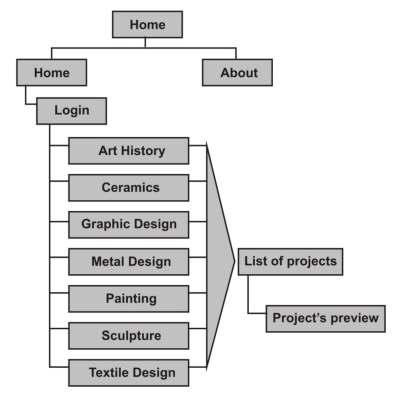 Formation of ADAVA Logo
Formation of ADAVA Logo








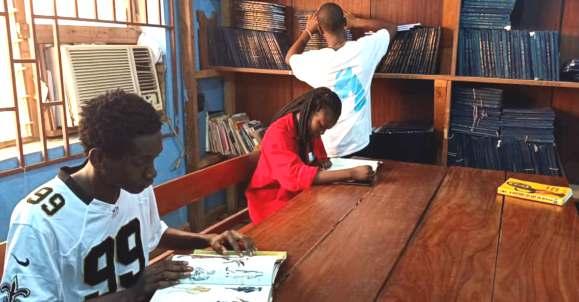








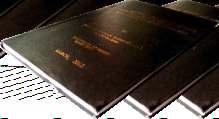

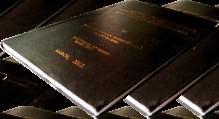



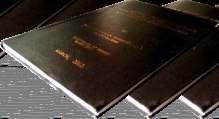

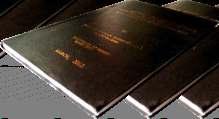





 Web Header
Web Header



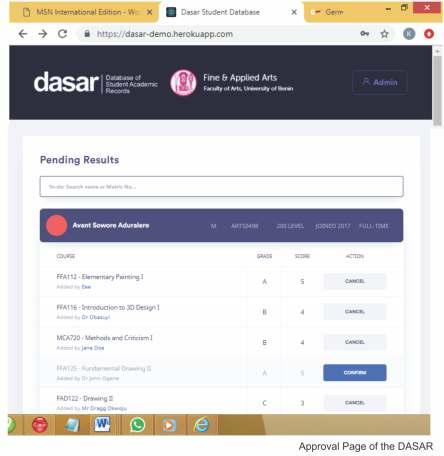

A
The following personalities are hereby acknowledged for the different pivotal roles they played to ensure the success of this study. Special thanks go to the Head, Department of Fine and Applied Arts, University of Benin, who is also my supervisor, Professor J.U. Ogene, for his fatherly, kindhearted leadership, selfless service and invaluable contributions towards the successful completion of this study, Professor E. I. Ononeme, Professor F. Odiboh, Professor (Mrs) S.U. Ebeigbe, Professor M.E. Imonikebe and Professor. A. Bardi for their wealth of experience they shared with me. To Dr. F.E. Obasuyi (Associate Professor), Dr. F. Egwali (Associate Professor), Dr. K.O. Emeriewen (Associate Professor), Dr. (Mrs) T.U. Osaigbovo, Dr. Sam Ukweku, Dr. K. Eweka, Dr. (Mrs) L.E. Onwuankpa and to my classmates for their moralsupport.
My profound gratitude goes to my employer, University of Benin, Benin City, especially Professor Lilian Salami (Vice Chancellor), Professor F.F.O. Orumwense, (immediate past Vice Chancellor), Professor A. Falodun (former Deputy Vice Chancellor), Mrs. O.A. Oshodin (Registrar), Professor F.E.O. Omoruyi (former Director, Centre for Distance Learning), Professor Stella Chiemeka (Rector, Delta State Polytechnic and the entire members of the Shobukonla and Udele's families,fortheirencouragementandsupportinmanyways.
Special thanks to my research assistants, Freedom Owologba, Abraham Udele, Francis Ocholi and Tomisin Olakunle. The following peopleareherebyacknowledgedfortheirmoralsupport:ProfessorO.T. Feyi-Sobanjo, Dr. (Mrs) F.M. Palmer (Associate Professor), Mr. C.A. Williams, Dr. P . Aletor, Dr. L. Agbontaen, Dr. T.S. Eleyinde, Dr. M.O. Omorogieva, Dr. S. Athekhame, Dr. K.D. Nwabuoku, Mrs Funke Baruwa, Mrs Funmi Williams, Miss Taiwo Ajiboye, members of staff, Centre for Distance Learning, members of staff, Department of Fine and Applied Arts, members of Art Galleries and Promoters Association (AGPA), Pastor Sunday Aisabien, Pastor Henry Abuah, Pastor I. Iyare, your encouragements in many ways are worthy of mention. This acknowledgments will be incomplete without appreciating the moral support of the following friends and supporters, Kufre, Deborah, Hannah, Tiwa, Enose, Evans and Emry. To other numerous well-wishers andsupporters,Ithankyouall. Above all,special thanks to my beloved wife,Elizabeth Shobukonla and my children - Joy, John, Jemima and Joseph,for being there for me always.